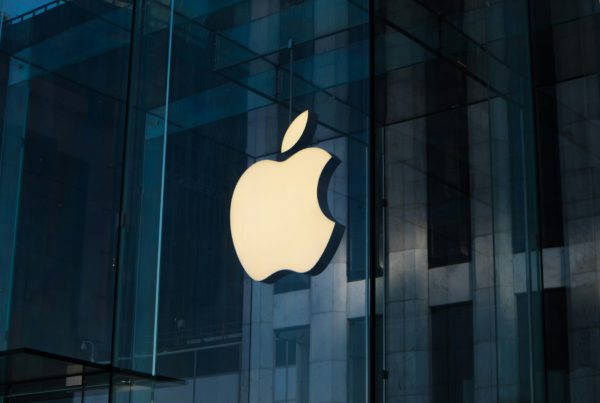An entire virtual universe…
“People come to the OASIS for all the things they can do, but they stay because of all the things they can be.”
Wade Watts in “Ready PlayerOne”
What is metaverse?
The concept of “Metaverse” has become increasingly popular in recent years, but what exactly is it? The simplest and most understandable definitions, which I encountered in documenting for this article, are those of
A three-dimensional virtual reality in which users can interact with each other and with digital objects and environments.
while according to the Forbes magazine website,
The Metaverse is an evolution of the internet, a shared virtual space that merges with physical and digital reality, allowing users to interact, create, and live immersive experiences.
From the pages of science fiction to digital reality
The term was first used in science fiction: it was coined by the writer Neal Stephenson in 1992 to describe the digital world in which the events of his novel Snow Crash take place. It was only later adopted by ICT to describe the idea of virtual reality, where users can interact with each other as if they were in the same room.
The metaverse as the future of social technology
According to a 2021 Wired article,
The Metaverse is set to become the future of social technology, offering a new way to connect
The article suggests that it will not just be a place for people to play video games, but could become a new and dominant way of working, learning and socialising online, replacing the web.
Technological challenges blocking the Metaverse
At present, however, there are several reasons why Metaverse is not yet tangible. Firstly, the technology required to create a fully functional Metaverse has not yet been developed. For example, current virtual reality does not yet allow for true social interaction, as users cannot see each other’s facial expressions or sense their position in the virtual world.
What is more, they are not yet available, but a large number of companies are active and investing large amounts of capital in these devices that would allow us to be completely immersed in this world – we talk about expanding perception beyond the visual and auditory to include the tactile, olfactory and gustatory – and allow us to move around in total freedom, as we have seen in the films “The Lawnmower Man” or, more recently, “Ready Player One”, based on the novel by Ernest Cline.
The lack of connection between digital worlds
However, the most important reason why the metaverse is currently just a fashionable term used by so many companies to promote themselves is that there is no interoperable connection between the various existing digital universes, i.e. no way in which assets (real estate, simple digital clothes…) can be bought and used independently of the company that creates a particular part of the fictional reality.
Cryptocurrencies and NFTs: a possible solution?
This requires the minting of at least one currency of exchange and the accounting of digital objects that are unique and functional in terms of standards recognised by all actors and users. Cryptocurrencies and NFTs could be the solution to this need, but at present they are mostly used for their speculative aspect without tangible applications in the virtual economy.
Security and Privacy in the Metaverse
According to a 2021 article in The Verge, there is also another issue of high relevance:
The metaverse faces the same privacy and security issues that already plague social media and online gaming platforms.
I would like to add that this will be even more the case since, as everyone knows, the digital world is infinitely reproducible and the activities we carry out in our homes, both intimate and everyday, which are actively transferred to a digital world, will have to be adequately protected so as not to fall prey to parties interested in exposing us to public ridicule or worse.
Meta and Apple: the main players in Metaverse
Meta and Apple are two of the largest and most influential companies in the technology sector and have been actively investing in this area for some time, more or less publicly.
Meta: The Virtual Reality Giant
Meta was a pioneer of modern virtual reality: so, called because it was reincarnated after a few attempts in the 2000s, it is the kind of technology that provides isolation from the tangible world, transporting the user into a completely different one with its own physical logic.
The company’s entry into this world was marked by its acquisition of Oculus VR, the maker of devices such as the Rift and Quest, in 2014. It also recently launched Horizon Workrooms, a virtual reality application for remote team collaboration, and Horizon Workrooms Rooms, a VR experience designed for learning and training. Meta has stated that the future of its platform will be based on virtual reality, partly to recoup the investment it has made, which has so far not paid off as expected. The company has also just released the latest version of its Quest Visor, which greatly enhances the virtual reality experience without disrupting it.
Apple and the augmented reality revolution
Apple, on the other hand, began investing in augmented reality with the introduction of ARKit in 2017, while in June 2023 it unveiled the Vision Pro visor and VisionOS operating system, which will revolutionise the way we interact with the metaverse. With its 3D camera and spatial computing capabilities, Vision Pro can create immersive experiences that transport users into reality in ways we could only have dreamed of a few years ago.
VisionOS, meanwhile, provides a platform for developers to create new and innovative applications in AR, while retaining the ability to use – through a new three-dimensional interface that makes them appear as part of their own space – the thousands of applications already available for iPhone.
Together, these technologies have the potential to open up new possibilities for exploration, education and entertainment.
Mixed reality: the future of digital perception
Both companies are also investing in mixed reality (MR), which combines elements of virtual and augmented reality by using Lidar and being influenced by objects in the real world, creating an even more immersive experience. While VR is more focused on the gaming and entertainment sphere, AR and MR could have a tangible impact on everyday life, going as far as changing the perception of reality.
The future of the Metaverse: between opportunities and challenges
As you may have realised, Metaverse is a fascinating concept and could represent the future of social technology.
However, there is not yet a fully functioning Metaverse platform, and there are still many technical and social challenges to overcome. Despite this, many experts predict that Metaverse will become a reality in the near future, and it will be interesting to watch how this technology continues to develop and influence society.
Simone Rebucci
Read the other articles in the September 2023 issue of spaceO:
- Apple: How Apple evolved in 10 steps
- AI: The power of AI
- Interview with our colleagues: Roberto Leone
- Food and Future: Augmented Appetite
- Robotics and the environment: PipeIn
- Security: Cybersecurity









